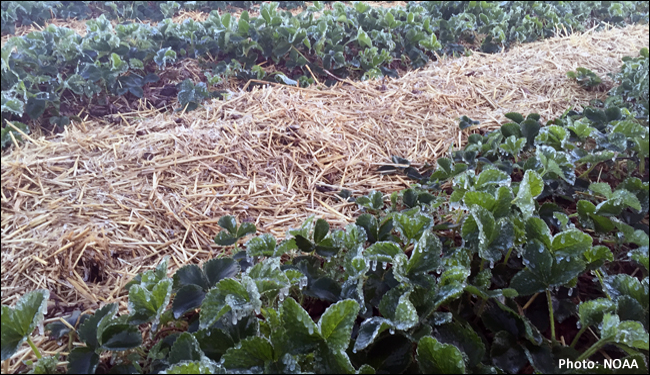
AS we say good bye to July, many farmers are celebrating that their crops survived the harsh weather.
However, it is too early to celebrate. Climate change effects have been felt this winter, with low night temperatures and high temperatures during the day.
It has been a very unpredictable July.
But low temperatures may persist this August. As such, methods of preventing frost attacks must continue to be employed.
There could be cold nights in the new month, and there are also high chances of frost attack. But there could also be very high temperatures that may stress crops.
Farmers must take the summer opportunity and get on to work in order to have a merry Christmas. The August and September crop matures during Christmas.
It is against this background farmers need to plant crops that will sell well during the festive season, especially those that make salads.
There are many different options to choose from. As long as you do not get any mega-heat waves, August can be prime time for veggies.
- We’re not concerned by now-habitual State media propaganda
- A false unity
- Ekusileni Hospital faces closure
- The Fiddler: A strange endingA strange ending
Keep Reading
But you need to get the timing right. You will also want to ensure you have reliable irrigation and shade cloth to protect baby plants from the harsh sun.
Cabbages, broccoli and cauliflower can take up to 80 days to mature, so it is best to plant early August in time for maturity in October and November.
Cabbage also makes use of the warm August and September.
Fall cabbages average 50 to 60 days to mature, and tend to perform better than their spring-planted counterparts.
However, prolonged night time temperatures under 10°C (50°F) can lead to premature bolting in some varieties. If you think a cold front is coming at the end of summer, use row covers to protect young cabbage plants.
Carrots can also be sown every two to three weeks throughout the season. Carrots also do well if they are planted in August.
If you truly love the sweet, nutritious roots, you should be sowing them every two to three weeks all season long. This means you will have new carrots coming up just as you begin to harvest the last batch.
Carrots are particularly finicky to moisture during their germination.
If your region is known for very dry August weather, be sure to overhead irrigate your carrot patch daily and cover with a layer of row fabric directly on the soil surface.
Patience and moisture conservation are key to getting seeds grow.
One of the most is notoriously cold-tolerant veggies, spinach is a must for August planting.
As long as the soil is cooler than 29,9°C (85°F), spinach should germinate just fine. You can also plant tumeric, ginger and cinnamon.
Turmeric is widely used in cooking as an additive and in vegan dishes. A uniquely knobby root, tumeric typically falls under the herbal category.
Traditionally used in Thai or Indian curries, turmeric has also found its way into superfood smoothies, supplements, and veggie dishes.
This heat-loving tropical plant can be grown outside almost all year round.
Let the “seed turmeric” nubs (actually pieces of the rhizome) scab over before planting them in your August garden.
In colder zones, you may need to sprout turmeric roots indoors earlier in the spring or in pots so they have enough time to mature before cold weather hits.
Like turmeric, ginger is a spicy rhizome that absolutely loves hot, sunny weather. Plant ginger rhizome chunks mid-summer in the garden or in containers and begin digging up the roots a few months later.
Framers with low budgets can also plant green mealie early August.
They bring in good money early December. Tomatoes, fine beans and sugar beans are crops that farmers can try in summer as long as they have proper irrigation systems.
- Gwabanayi is a practising journalist and a farmer in his own right. — 0772 865 703 or [email protected]










